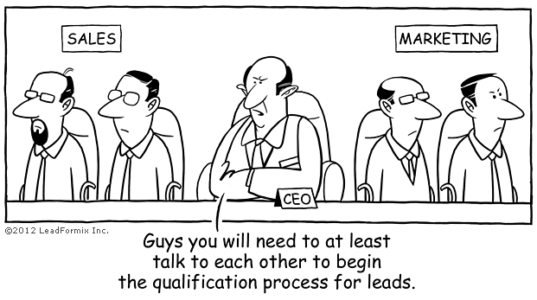Aligning Sales and Marketing (blog 1 of 3) – Key to Successful ABM
The way software is being sold, especially cloud software has been revolutionized. First, there was Marketing 2.0, then came Nurture Marketing which morphed into Inbound Marketing; quite frankly, I’m losing track (… and so do many of us that may not be early adopters, or they’re working too hard to keep up with every trend and follow their Twitter feeds real-time. Btw, these blogs are for the rest of us; be they senior managers or executives, or simply regular demand generation folks that want to keep up and produce real pipeline all the while). Anyhoo, now it seems “Account-Based Marketing” (aka “ABM”) is being expanded into the catch-all term to capture these major trends:
- Plummeting software prices: Cloud solutions are being sold at lower prices than ever before, motivating the need to replace more expensive techniques like enterprise selling or cold-calling with cost-reduced sales and marketing processes.
- Customer journeys are changing: It is a rare customer that has not done online research about the product they’re about to purchase. A recent article in McKinsey & Company’s “Marketing & Sales Insights” series provides compelling data on how even for large, key accounts the digital buying journey has changed the way they purchase, making old school selling insufficient.
- The sophistication of marketing automation software: Innovation started with the likes of Hubspot and Marketo and has now evolved to include many other tools. As have the myriad of vendors that support ABM through a wealth of online behavioral data that tracks – and intercepts – eventual prospects’ digital journeys.
- Cost-optimized demand generation processes: The above trends drive the need for deeper behavioral analytics as well as much more cost-optimized demand generation. Which in turn necessitate closer cooperation between sales and marketing. This sales-marketing alignment will help focus precisely defined customer segments, even down to a prospect in a market of 1.
Successful implementation of such high volume, high quality, and low-cost processes is doomed if sales and marketing cannot figure out how to work together. This blog is based on our experience with five concrete approaches that we employed to align marketing and sales. The results were impressive in that our teams were able to produce 75% of accepted sales opportunities within 9 to 18 months, all the while supporting business growth.
What were those keys to success?
1) Executive staff and sales and marketing teams need to be familiar with the basics of ABM:
- It all starts with setting realistic expectations with the board and executives. While modern demand generation approaches are more cost-efficient and result in high-quality leads, the process and infrastructure requirements are complex. Therefore, it’s important to set realistic expectations for how quickly results can be generated; what is involved in setting up these systems; and, more importantly, how much will need to be invested for how long before management and the investors see upticks in growth.
- Second, sales and marketing teams need to meet frequently to understand the system to be built and learn each other’s languages. This ranges from how the two teams perceive market realities (for example, sales reps will see the political landscape of a prospect, while the marketing folks will home in on the prospect’s standing in their respective market place), on to communication and interpersonal differences (for example, salespeople tend to be more extroverted, while marketers quite often are more introverted; sales reps usually place a higher value on incentive compensation, while marketing folks derive motivation also from intrinsic rewards; etc.). Bridging these perceptions and communication differences requires patience and self-awareness.
- Last but certainly not least, the CEO and the board need to embrace analytics, and promote a data-driven and transparent approach to managing the opportunity pipeline. This implies learning how to use and analyze the data that the new systems provide. Since many executives have cut their teeth in the enterprise selling days of software sales in the 1990s or earlier, when selling was art more than science, some find the wealth of data in modern systems overwhelming to use and difficult to understand.
Don’t turn that dial, we’ll be back with 2 more blogs on aligning sales and marketing …








